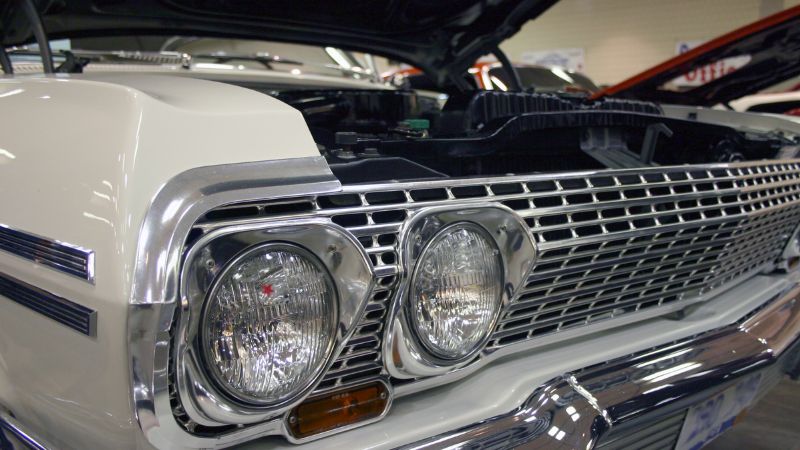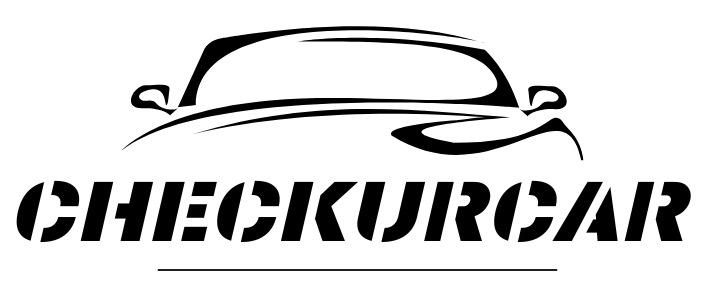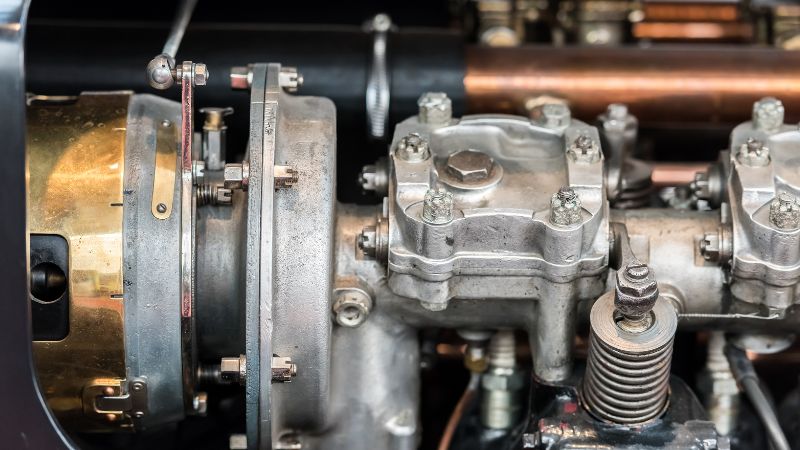The oil pan torque sequence is crucial for the engine assembly. You must adequately tighten the oil pan bolts to ensure a secure seal. Unfortunately, if you don’t do that accurately, you will face many problems like engine damage & failure, oil leaks, etc.
Naturally, the torque sequence comes with an engine with certain specifications, and all engine torque sequence isn’t the same. And if you want to replace it before, you need to check what’s your model. Nevertheless, to get the right torque, following the sequence properly is essential to prevent damage. If you own a Chevy 5.7 vehicle, you may wonder about the Chevy 5.7 oil pan torque sequence. To get more information about this topic, please keep reading.

What Is a Torque Sequence?
In general, to tighten any object, you should apply rotational force, known as torque sequence. In other words, to tighten any bolt, you need to torque it. The process transforms a bolt into a spring-type ingredient to make two different elements. But in this process, you need to apply proper torque.
More importantly, correctly measuring the torque sequencing or tightening process is essential. You should also carefully torque the bolt, meaning too tight or too loose can be dangerous and break your bolt.
Overview Of Oil Pan Torque Sequence:
The torque sequence needs to secure the oil pan to its block. As a reservoir, without a bolt, the oil pan can’t be stable and stores the fuel. Indeed, if you can properly sequence the torque, the oil pan will be stable in its block. Even it won’t be unstable despite vibrating the engine. The sequence comes from the manufacturer, and you can change it depending on your vehicle engine make and model.
Sometimes, you can change the sequence depending on the bolt pattern used with a particular recommendation. At last, the proper torque sequence key purpose is unique load distribution for the oil pan.
Chevy Oil Pan Torque Specs:
You need to know that your car, every last nut and bolt, has a recommended torque value. From these values, some values can be “fudged” without damage. But in your engine, it works carefully. To ensure accuracy, all these torque sequence values were taken from different sources. However, let us know the proper specifications of your Chevy oil pan torque:
| Engine Tools/Parts | Torque |
| Camshaft Sprocket-to-Camshaft Bolts | 20 ft. Ibs |
| Cylinder Head Bolts | 65 ft. lbs |
| Intake Manifold Bolts | 30 ft. lbs |
| Exhaust Manifold BoltsInner 2 Bolts on 350 cu. in. Engine | 30 ft. lbs |
| Main Bearing Cap Bolts (for outer bolts with four in bolts) | 65 ft. lbs. |
| Main Bearing Cap Bolts | 70 ft. lbs. |
| Oil Pan Bolts | 10 ft. lbs. |
| Oil Pump Cover Screws | 8 ft. lbs |
| Rear Oil Seal Housing Bolts | 135 inch lbs. |
| Flywheel/Driveplate Bolts | 60 ft. lbs |
| Rocker Arm Cover Bolts | 4 ft. lbs |
| Rod Bearing Cap Nuts | 45 ft. lbs. |
| Damper-to-Crankshaft Bolt | 60 ft. lbs. |
| Thermostat Housing-to-Intake Manifold Bolts | 30 ft. lbs |
| Water Pump Mounting Bolts | 30 ft. lbs. |
| Timing Chain Cover Bolts | 7 ft. |
Chevy 5.7 Oil Pan Torque Sequence:
To do the torque sequence for your Chevy 5.7 oil pan, you need to follow the sequence:
It’s best to do the front and back covers first; however, the rest can go in any sequence. Before torque down them, it’s essential to align everything nicely. If you want to start from the main pan bolts, tighten them front/back correctly; otherwise, your pan will crack.
- Tighten the block and oil pan from cover bolts from the oil pan to 18 lb-ft (25 N.m.)
- Now, tighten the back cover bolts from the oil pan to 106 lb-ft (12 N. M).
- After that, tighten the flywheel housing bolts to 37 lb-ft (50 N. M).
2013 Chevy 5.7 Oil Pan Torque Sequence:
Accordingly, for different bolts, you need extra torque. Let’s know the 2007 to 2014 Chevy 5.7 oil pan torque sequence below:
- First, tighten the bolts with your hand as much as possible
- Then, tighten the oil pan’s middle section
- Go back and forth away from the oil pan center
- You need to tighten the back cover 106 in-lbs
- Then tighten the front cover 18 ft lbs
- Finally, tighten the bell housing bolt cover to 137 ft-lbs
2005 Chevy 5.7 Oil Pan Torque Sequence:
2005 Chevy 5.7 engine uses two different size bolts for the oil pan like M8 and M6. The M8 is a large bolt; you should torque it to 18 foot-pounds in a cross-pattern design. It would help if you torqued the M6 bolts in the same cross pattern in 8 ft-lbs. Besides this, there is the drain plug with the oil pan. Yet, you can often remove and install this drain plug if you need. In fact, you can torque it to 18 ft-lbs.
LS Oil Pan Torque Sequence:
Most LS engines follow the recommended torque specifications of 18 ft. lb or 24 Nm for tightening the bolts. For different types of LS engines, you need a different torque sequence. That’s why you should follow your car’s manual to know the proper sequence when you want a torque sequence. Don’t delay; let’s learn the torque sequence for the LS engine:
- First, in the oil pan crankcase, you need to tighten the drain plug.
- Then, to guide the bolt, you can use your hand, and with the proper specs, you should tighten it.
- Now, you must put the oil filter in the right place and reach the adapter.
- After doing this, start torquing. Once you touch the crankcase, torque it to three-quarters or full.
- At last, tighten the oil pan bolt heads. Repeat the steps if you find any problems.
SBC Oil Pan Torque Sequence:
To torque your Small Block Chevy engines or SBC engines, you need to do the following:
- Start from the center of the oil pan and “snug” them outwards. In the center, start and work up to do the other sequence.
- On the 2nd round, if you see the pan gasket start the squish, stop snuggling.
- Remember to put some RTV where the gasket meets the rubber end seal.
- It’s best to do it once before mounting the pan to ensure the primary and rod bolts are suitable.
- It’s best to check the windage tray and oil pump bolt torque if you need it.
- It would help if you tightened it enough to get a proper claiming force without distorting the gasket.
FAQ ( Frequently Asked Questions):
Q. What is the torque for oil pan bolts on a Chevy 350?
The torque for Chevy 350 for oil pan bolts is 12 ft. lbs. After all snug, start working in a corner.
Q. What is the proper torque for oil pan bolts?
The proper torque sequence for oil pan bolts varies depending on the car model and year. Additionally, to know your car’s adequate torque, it’s best to check your manufacturer’s specs.
Q. What are the torque specs for the oil pan bolts on a Small Block Chevy?
The Small Block Chevy oil pan torque specs are:
| Tools | Torque Specifications |
| Inner main cap Bolt (7/16 in.) | 70 ft.-lbs. |
| Outer main cap Bolt (7/16 in.) | 65 ft.-lbs. |
| Outer main cap Bolt (3/8 in.) | 40 ft.-lbs. |
| Connecting rod Bolt (3/8 in.) | 40-45 ft.-lbs. |
| Connecting rod Bolt (11/32 in.) | 38-44 ft,-lbs. |
| Screw-In Rocker Arm Studs | 50 ft.-lbs. |
| Cylinder head bolts | 65 ft.-lbs. |
| Oil pump bolts | 60-70 ft.-lbs. |
| Intake Manifold Bolts (Cast Iron Heads) | 30 ft.-lbs. |
| Bellhousing Bolts | 25 ft.-lbs. |
| Pressure Plate Bolts | 35 ft.-lbs. |
| Flywheel/Flexplate Bolts | 65 ft.-lbs. |
| Harmonic Damper Bolt | 60 ft.-lbs. |
| Cam Sprocket Bolts | 18-20 ft.-lbs. |
Final Word
In summary, torque sequence is an essential step in the oil pan installation process. Torque sequence ensures you securely tighten the oil pan with the engine block. This way, you can protect your engine from oil leaks and damage. For that reason, you should adequately do the torque sequence process.
However, here we have described the Chevy 5.7 oil pan torque sequence so you can do that properly. Lastly, following your manufacturer’s recommended torque specification and sequence is best to ensure proper installation.


